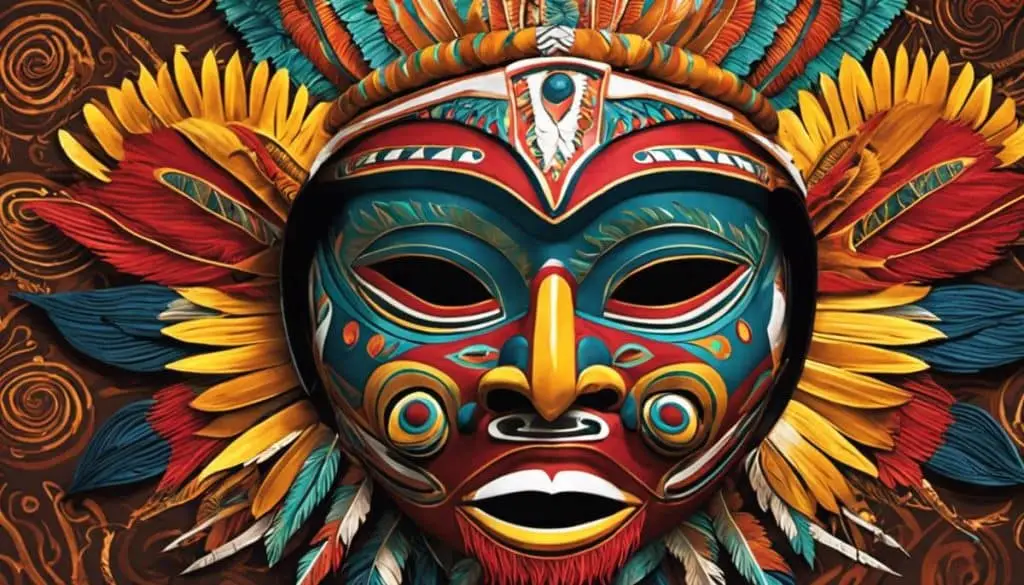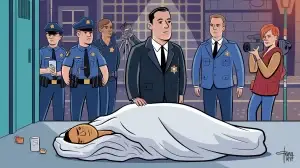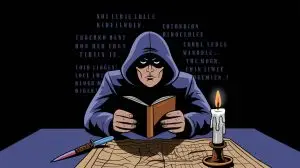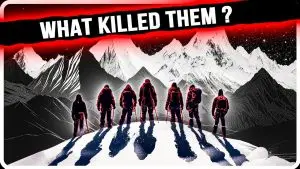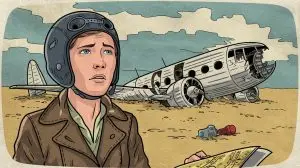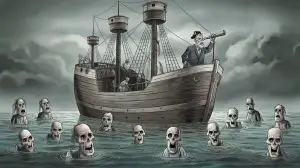As the sun dips below the horizon and twilight lays its hushed blanket across America, the stage is set for ancestral whispers and spectral tales to scrawl their narratives on the canvas of the night sky. Unfathomable creatures slumber within our shadows, ghostly apparitions twine within the soft murmur of the wind, and chilling urban legends pulse within the heartbeat of our cities. Through exploring the mystic threads of Native American folklore, the haunting echoes from the Southern United States, the unnerving whispers of modern urban myths, the diverse spectral tales imposed by our immigrants, and the creeping dread within our literature, we peer under the veil of what has been and what might be, into the cryptic realm of Creepy American Folklore.
Native American Folklore
Unleashing the Ghosts: Native American Folklore & its Chilling Contribution to American Mythology
If you’ve ever been enchanted by the compelling power of myths, legends, and chilling folklore, take a deep dive closer to home – right into the heart of Native American storytelling. The rich tapestry of Native American myths has lent an unparalleled magic to the vast vista of America’s mythological landscape. It offers a fascinating touch of the mysterious, creating blood-curdling stories that continue to captivate us.
Native American folklore is as diverse as the tribes themselves – from the Mi’kmaq in the north to the Pueblo tribes in the South, the narratives, while distinct, share common themes that explore mysteries and uncertainties of existence, thus offering an eerie dimension to American mythology.
Death and afterlife, a common theme among Native American tales, contributes significant chilling narratives, delivering an uncanny perspective of life beyond mortality. The ghostly story of the ‘Ghost Woman’ from the Hopi Tribe speaks of an ethereal spirit that steals food and frightens children, reinforcing the belief in spiritual entities and the existence of another realm beyond the mortal world.
Likewise, shape-shifting narratives, found in many tribes, hold eerie undertones. The Navajo ‘Skinwalker’ legend is a classic example. The Skinwalker, often a person who has succumbed to taboo magic, can morph into any animal at will. They utilize their abilities for malevolent purposes, instilling fear and dread into the hearts of tribe members and contributing an intensely terrifying element to the American mythological universe.
Creepy narratives of strange entities also abound in Native American folklore. For example, the eerie legend of the Wendigo, from the Algonquian tribes, is a story of a vicious, insatiable monster often associated with cannibalism and starvation. This creature, also depicted in modern pop culture, adds a chilling, monstrous element to American mythology.
Nature too, in Native American myths, often conceals spine-chilling aspects translating into ominous American folklore. Thunderbird, a supreme nature spirit among Pacific Northwest tribes, creates thunder by flapping its colossal wings, striking fear and awe alike into the hearts of the populace while adding a compelling narrative that ties the mystical and natural worlds together.
Moreover, Native American ‘Trickster’ narratives, although known for their humor, often carry eerie undertones. These complex spirits like Coyote, Raven, or Iktomi subvert norms, breaking cultural rules, and often creating chaos. Their unpredictable, frequently ominous character lends American mythology an element of suspense and supernatural mischief.
In conclusion, the chilling narratives from Native American folklore contribute significantly to the gripping landscape of American mythology. The mysterious themes, supernatural elements, and eerie undertones not only provide a unique perspective on spiritual beliefs and moral values but also continue to instill bone-chilling thrill, maintaining their timeless effect. Undeniably, the Native American legacy goes beyond history, nestling into the spine-tingling crypts of American mythology—an untapped world of terror and fascination, waiting to be explored. So, are you ready to get spooked?
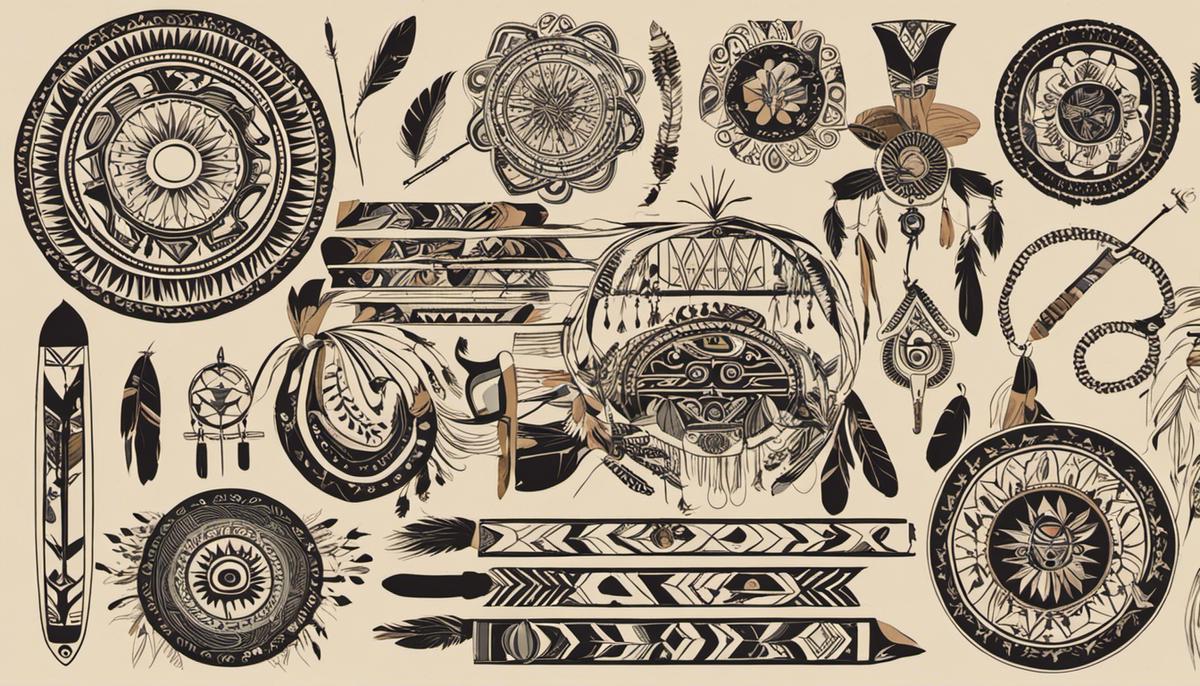
Folklore from the Southern United States
Without a doubt, the American South has solidified its reputation as the breeding ground of spine-tingling tales and haunting narratives. But why is it that this particular region of the United States has given rise to some of the country’s eeriest folklore? Why are our minds filled with images of moss-laden swamps, desolate plantation houses, and unseen specters whenever we think about Southern ghost stories?
The first cornerstone to understand the nature of Southern Folklore is the profound influence of African-American culture. The Afro-American community, especially those brought to the South as part of the slave trade, brought with them rich, vibrant—and often terrifying—folklore from their homelands. Tales of shadowy figures, horrific monsters and vengeful spirits became an integral part of Southern oral tradition. Gullah legends like the “Boo Hag” and “Plateye”, from the sea islands of South Carolina and Georgia, are striking examples of this truly chilling African influence.
The second dimension of Southern folklore is the region’s traumatic history. The South has a past marked with bloody battles, violent conflicts, and unspeakable atrocities—an ideal backdrop for bone-chilling tales. Stories about the Civil War, such as the Headless Horseman of Gettysburg, the Ghosts of Antietam, and countless others remain infamous. Specters of fallen soldiers, tales of tormented spirits, and eerie accounts of haunted locations rooted in war and conflict have the power to send chills down the spine of the bravest.
Southern Gothic literature, a genre in its own right, further amplified the region’s eerie allure. From William Faulkner’s brooding narratives to Flannery O’Connor’s grotesque tales, Southern Gothic literature is filled to the brim with macabre imagery and dark symbolism. This literary tradition has done a significant job in intensifying the sense of horror and dread associated with the South.
Moreover, Christianity and superstitions also play a critical role in shaping Southern folklore. The deeply-rooted Christian beliefs of the region juxtaposed with the lingering fear of witches, voodoo, hexes, and curses—relics of a dark past—resulted in a potent mix of terror. We see this blend of devout faith and dark superstition in enduring stories of deals at the crossroads, supernatural retribution, and haunted houses of God.
Last but not least, the vast, mysterious landscapes of the South, replete with expansive marshlands, dense woods, and meandering rivers, provide a perfect setting for the unknown and uncanny to lurk. The dark, unexplored corners of these terrains, and the isolation they can instill, are fertile ground for the imagination to conjure up the most chilling tales of dread and horror.
Digging through the rich soil of Southern folklore, it becomes clear that it is the combination of African-American cultural influences, historical trauma, literary contributions, the confluence of faith and superstition, along with the region’s geographic attributes that have sown the seeds of some of America’s eeriest tales. From the haunted streets of Savannah to the spooky swamps of Louisiana, the South certainly continues to live up its legendary status in the annals of American folklore. Be it dread or thrill; these stories have become an inseparable part of the Southern identity, a tantalizing journey that continues to fascinate anyone brave enough to delve into these haunted depths.
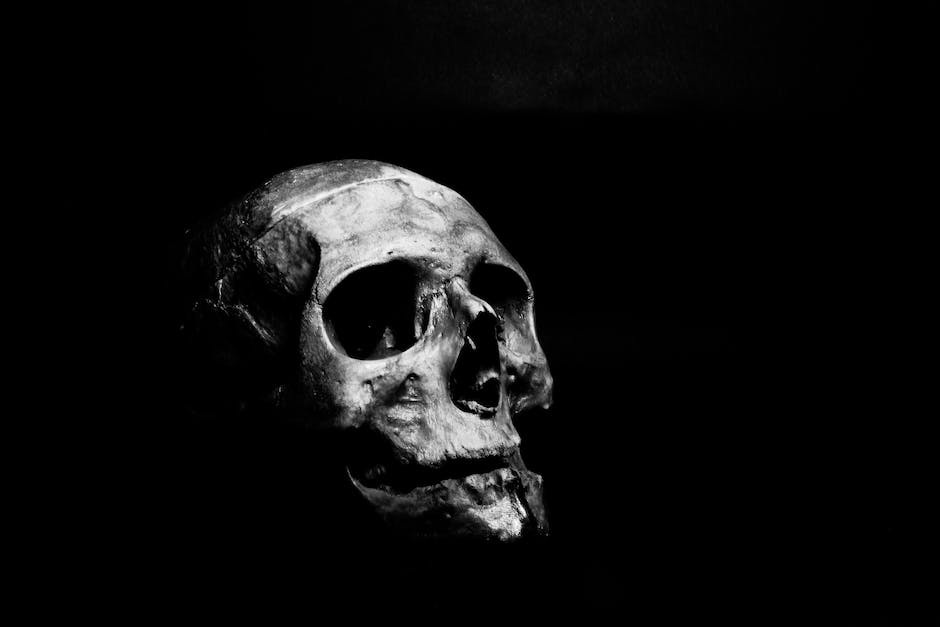
Modern American Urban Legends
Delving into the New Age: Chilling Urban Legends and their Roots
In the initial chapters of our exploration into the mysterious world of ghoulish folklore, we took you on a trip back in time, showcasing the terrifying tapestry of traditional Native American and Southern Gothic folklore. Now it’s time to turn the clock forward and become urban explorers, dissecting the intriguing adaptations of these folklore themes in contemporary American urban legends.
First, an eerie modern echo of shape-shifting narratives is found in the urban legend of the Mothman. Hailing from the small town of Point Pleasant, West Virginia, this figure is described as a human-sized bird creature with glowing red eyes. Recalling the terrifying tales of the Navajo Skinwalker and the ominous Thunderbird, the Mothman dredges up raw fear while embodying the uncanny kinship between humans and nature.
Parallel to the unnerving Ghost Woman stories of the Hopi Tribe, stories about Bloody Mary serve the same function in urban lore. As children dare each other to summon her by chanting her name in a darkened mirror, they are unknowingly participating in a contemporary adaptation of a chilling ancestral narrative.
Next up, the ominous figure of Slender Man. This terror-inducing, faceless figure is a modern-day iteration of the fearsome Wendigo or cannibalistic spirits of yore. Reflecting our societal fears of the anonymous, often monstrous, unknown in the digital age, the Slender Man’s slender fingers reach into our collective consciousness, ensnaring us in terror.
Akin to the trickster narratives in Native American folklore, the modern urban legend of the Lock Ness Monster illuminates our appetite for audacious trickery and thrill. Its conceivable existence fiddles with our reality, teasing our curiosity and offering an entertaining break from the mundane.
Delving further, one can still see elements of the Southern Gothic in urban legends such as the infamous stories of haunted plantations. The traumatic history and mysterious landscapes of the South serve as catalysts for tales of past owners or enslaved spirits lingering beyond their mortal coil.
Religion and superstition continue to fuel urban myth-making, with the cursed number 13 or legends around the Bermuda Triangle echoing the old-world beliefs in the supernatural. In fact, many of these stories feel eerily reminiscent of the superstitions and belief systems that shaped Southern folklore.
In the end, what one can deduce from the evolution of American urban legends is that even as times change, the human desire for spine-tingling narratives remains unaltered. These narratives serve as hidden arteries, connecting the past with the present, the rural landscapes with the bustling cities, and ultimately, fear with fascination. Given their thriving presence in our modern culture, it’s safe to say that the spirit of traditional American folklore is still alive, just dressed in different, but equally hair-raising attire.

The Influence of Immigrants on American Folklore
“Exploring the Immigrant Influence on American Folklore’s Eerie Evolution”
Moving further into the thicket of American folklore, it’s impossible to ignore the depth of horror and fascination that immigrant stories have added. These folktales, having traveled across oceans and over centuries, bring their unique colors and textures to the American narrative fabric.
Diving in, let’s start with Irish mythology enriching the American landscape with its tales of banshees. Banshees, originally a Celtic myth, found their place in American tales as foretellers of death. Their heart-wrenching cries in the dead of night not only significantly influence the horror genre but also serve as constructivist keys within narratives of doom and death.
Looking over to Eastern Europe, we see that immigrants brought with them stories of Baba Yaga, a witch-like figure lurking deep within the forest. These tales instilled an inherent fear of the unknown wilderness in early American settlers, leading to the creation of numerous wilderness spirit tales that continue to haunt us today.
Venturing into the mysteries of the Southeast Asian folklore, we meet the infamous Aswang, a shape-shifting evil spirit. Filipino immigrants brought the tales of Aswang, adding a new edge to the existing horror narratives. The Aswang’s multifaceted nature is reflected in an array of American cryptids and bogeymen, advancing the shapeshifter narrative beyond its Native American origin.
However, immigrant stories aren’t just about the monsters and spirits—sometimes the real horror lies within the histories that they carry. Chinese immigrants’ narratives around the transcontinental railroad construction depict gruesome working conditions that have inspired an array of haunted work-site legends. Their tales of survival in extreme conditions echo in the whispers of ghostly rail workers lamenting their unmarked graves.
Italian immigrants have also notably spiced up the American folklore scene. Their age-old evil-eye curse has knocked on the doors of American urban legends. The “malocchio,” an ill-wish that could cause bad luck or harm, translated into supernatural stories of curses, thus enriching the American urban myth-making.
Lastly, let’s consider the lengendary Jewish golem. Brought to American shores by Eastern European Jewish immigrants, this animated anthropomorphic being, built from clay and brought to life by a rabbi, has an undertone of fear and awe. The golem story, a symbol of protection as much as it is a tale of horror, has woven a unique thread into the American fascination with the man-made horrors of the likes of Frankenstein.
The immigrant influence on American folklore paints a fresher, deeper, and terrifying picture that is more diverse and inclusive. It is a testament to global horror catalogues converging on this vast continent, magnifying, rather than muddying, the terrors and thrills of the unknown. The infusion of ethnic and cultural anxieties, beliefs, and values into American folklore has only amplified its chilling allure, making the battle of survival against the supernatural more nuanced and universal.

The Role of Folklore in American Literature
Among the vast and varied tapestry of American folklore, the Irish mythology brings forth an ethereal yet ghastly facet. Think of the wailing banshee, the spectral harbinger of death, who has inspired a slew of ghostly apparitions and restless spirits across a multitude of American tales. The forlorn laments of these phantom beings echo in the chilling narratives of American literature, adding an extra layer of morbid fascination and morose beauty to the genre.
Intriguingly, eastern European folklore has also had a remarkable influence on American tales, birthing monsters that continue to haunt our collective imagination. The witch-like Baba Yaga, famous in Slavic mythology for dwelling deep within the wilderness in a hut standing on chicken legs, has distinctly morphed into American narratives. The wild and unforgiving wilderness, home to mysterious spirits and unfamiliar creatures, holds a parallel to the harsh and unpredictable world encapsulated in countless American horror tales.
Venturing further into the realm of the unknown, Southeast Asian folklore brings with it the sinister story of Aswang – shape-shifting creatures who feast on unborn children or the ill. This monstrous being, painting a gruesome picture of supernatural cannibalistic predators, has populated American cryptids and bogeymen, lending an intensified degree of spine-chilling terror.
Chinese immigrant narratives have also left an indelible imprint on American folklore, with eerie tales spun around the grueling construction of the transcontinental railroad. The haunted work-site legends persist, passing from generation to generation, steeped in sorrow, exploitation, and aching nostalgia, only to consolidate the sinister side of American folklore.
Italian immigrants, carrying with them the concept of the ‘evil eye’ curse, began to serve a new brand of thrill in the American horror lore. The fear of these imminent disturbances to luck and prosperity incites a ghastly paranoia and obsessive counter rituals, enriching the eerie repertoire of American urban legends.
Moreover, the eastern European Jewish immigrants played a significant role in American folklore by introducing the legend of the golem. These man-made creatures of clay or mud, animated to protect the creators, precisely portray the American fascination with man-made horrors. Our unnerving infatuation with franken-crafted monsters forms a riveting part of the American literary trajectory.
In summary, American folklore, in its broadest sense, has been a fertile ground, constantly enriching and expanding through the influence of various immigrant cultures. This diversity and inclusivity is what makes it unique, reflecting a melting pot of chilling narratives embroidered with intercultural threads. It not only holds a mirror to society’s collective fears and anxieties but illustrates our eternal and indiscriminate fight against supernatural forces. American literature, drawing from this rich folklore, continues to entertain, educate, and enlighten us about the country’s multifaceted and multicultural past.

As we release the lingering tendrils of the spectral stories that have woven their threads through the fabric of American culture, it’s clear that these tales are far more than mere scares; they serve as the subliminal tattoos etched into the culture’s collective consciousness. Whether whispered in the ancient dialects of Native tribes, sung over the crackling fire in Southern homes, murmured in the bustling labyrinths of modern America, or printed in the hallowed annals of literary masterpieces, these eerie legends remind us of the universal human need to face, and perhaps even embrace, the midnight corners of our fear and curiosity. So, tonight when the curtain of darkness falls, listen closely to the quiet, for the echoes of these creepy tales might just answer you back.

